How HMG makes an (olive) oil and water relationship work

Herdade Maria da Guarda (HMG) has been able to keep its olive oil production during the last years, while some of the largest european producers have faced decreasing productions as a result of extreme heat waves and water shortage. Is it possible to mitigate climate change risk? This Portuguese company is showing the world how.
Climate change threats olive oil supply chain
In 2016, 2,538 thousand tons of olive oil were produced worldwide. [1] However, production has suffered significant variability in the last decade due to extreme weather conditions like heat waves and reduced rainfall.
Olive oil producers, particularly in Southern European countries, are facing considerable challenges due to climate change. [2] Italy was hit by an unusually strong heat wave in the summer of 2016. This led to less than half of the expected production due to increased water shortage – a trend that is expected to continue in 2017. [3] A similar effect in Spain is forecast to decrease the national annual production by 10%. [4] [5] The relatively low levels of production from suppliers in a concentrated region (70-75% from Europe) coupled with an increasing demand for olive oil is pressuring the global olive oil supply chain. [6]
Herdade Maria da Guarda – how to beat the weather?
Herdade Maria da Guarda (HMG), a Portuguese company with more than 1.1 million olive trees in the south of Portugal, produced 2,000 tons of olive oil in 2016 (0.1% of the worldwide olive oil production). [7]
Similarly to Italy and Spain, Portugal has also been extremely affected by heat waves and rain shortage, plunging 75% of the country into severe drought. [8] [9] Being aware of the risks of weather variability, HMG management took several measures to mitigate its effects, both in the short- and long-term. This allowed HMG to keep its level of production constant since 2015.
Short-term impact
HMG decided that all their olive trees would be supplied by a drip irrigation system, ensuring the plantation was not dependent on rainfall and would always receive the appropriate amount of water. Considering the significant costs that water represents to productions, HMG chose to only plant olive trees in lands close to the Alqueva, the largest European dam at the time of its opening. [10] Not only does this ensure competitive water prices, it also guarantees water supply – the Alqueva has enough supply to face up to 3 more summers of severe drought. Finally, HMG also selected olive species that are particularly resilient in extreme weather conditions.
Long-term impact
Despite having the water price locked for the next couple of years, HMG is concerned that the plantation may face a shortage of water and an increase in water price if severe drought persists.
To address this long-term concern, HMG first decided to focus on operational efficiency to protect long-term profitability. For example, the newly adopted method for planting olive trees allows for the optimization of labor costs – with the old system, the same 80 tons collected daily would require 200 workers, whereas today only one worker and one machine are sufficient. Another example is the way HMG optimizes the production waste (e.g. olive stones, sticks) to produce pellets to be used as fuel and supply self-sustaining energy to the plant.
Second, HMG also decided to build their own oil mill, reducing olive oil production time to just three hours (from the moment the olive is picked until it is turned into olive oil). This optimization of time ensures that all olive oil is extra-virgin, commanding a higher selling price with the same cost structure and making up for a potential decrease in revenues from reduced production or increased water price.
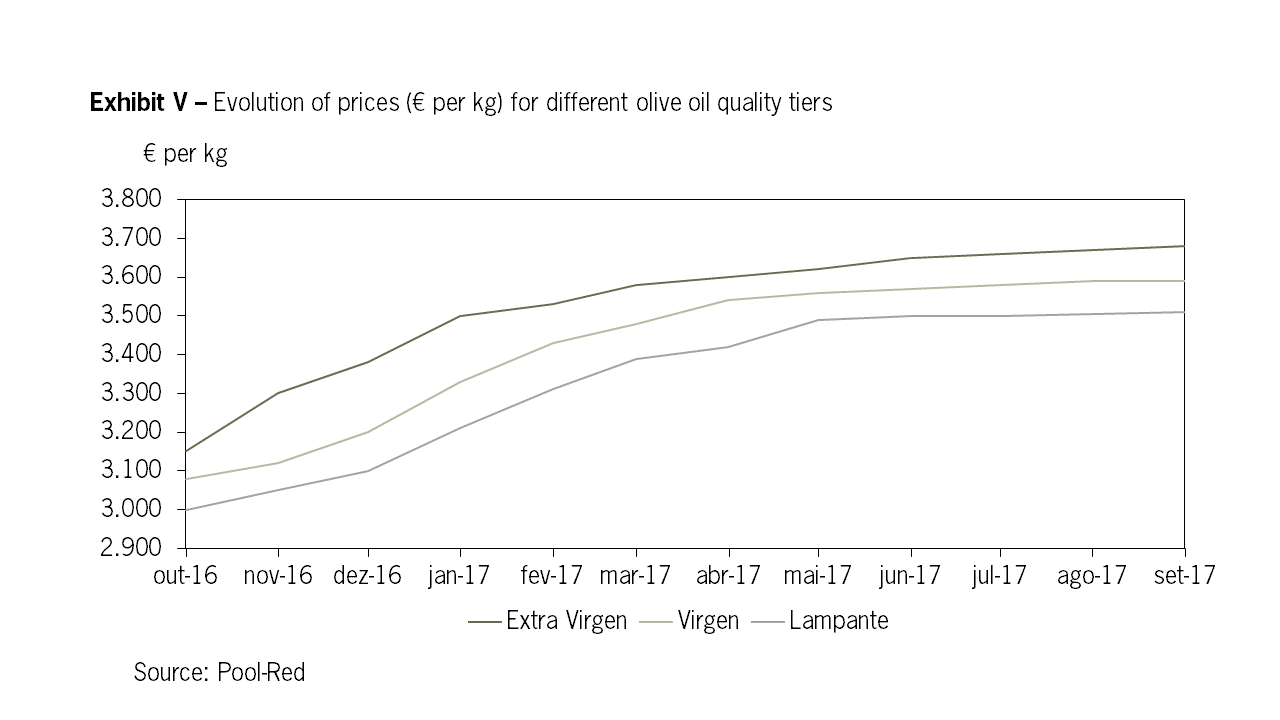
Third, HMG is starting a study to collect and analyze daily data using high-end technology to fully understand how each tree internally reacts to the climate and water. [10] This study will allow HMG to have a deep understanding of each tree, optimize water usage, and develop digital capabilities. [11]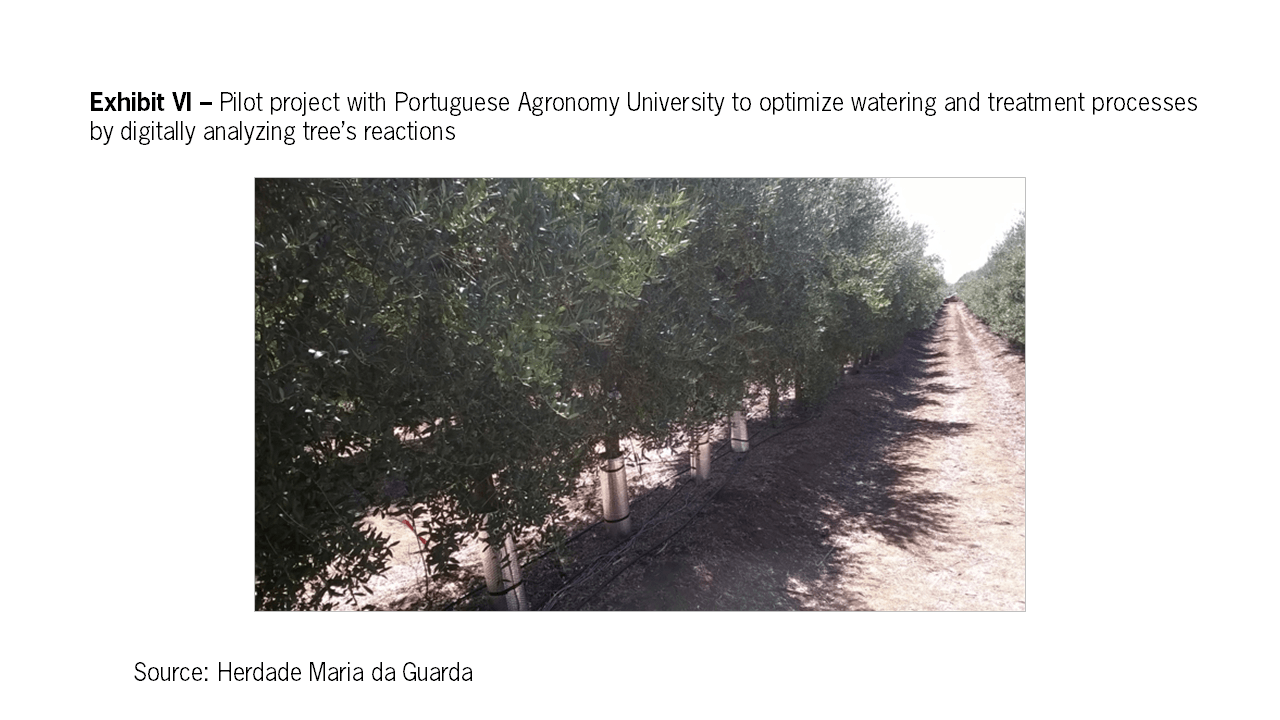
Finally, the 1.1 million olive trees contribute with the production of 8 tons of oxygen annually, meaning that two olive trees mitigate the annual pollution of one car, reducing the effects of the climate change. [12]
Suggested next steps and challenges
HMG’s impressive water optimization process ensured a constant production which is impervious to the extreme weather conditions in the last years, winning with increasing olive oil prices due to shortage of worldwide production. However, some challenges may still arise if overall demand for water, as expected, outstrips supply by 40% by 2030. [13] HMG can still have an important role in the water consumption optimization, both internally and across the industry, by engaging in various initiatives:
- Piloting innovative solutions, such as the cleansing and reuse of production waste water to water trees. [14]
- Increasing engagement with industry associations and sharing best practices.
- Increasing production levels, thereby raising the importance of olive oil exports in Portugal and ensuring future protection (e.g. when water supply may be restricted for agriculture).
- Studying alternative agriculture plantations for extreme weather scenarios.
Some questions remain unanswered. Should HMG foster even more radical solutions (e.g. genetically modified olive trees requiring less water)? Should they focus their efforts on quality or quantity?
Word count: 795
[1] International Olive Council. (2016). Olive Oil Worldwide Production. International Olive Council, accessed on November 2017.
[2] Olive Oil Times. (2017, July 5). “Heat Wave Challenges Italian Olive Growers”. Retrieved from Olive Oil Times: https://www.oliveoiltimes.com/olive-oil-making-and-milling/heat-wave-challenges-italian-olive-growers/57744, accessed on November 2017.
[3] Olive Oil Times. (2017, July 5). “Heat Wave Challenges Italian Olive Growers”. Retrieved from Olive Oil Times: https://www.oliveoiltimes.com/olive-oil-making-and-milling/heat-wave-challenges-italian-olive-growers/57744, accessed on November 2017.
[4] Olive Oil Times. (2017, July 5). “Heat Wave Challenges Italian Olive Growers”. Retrieved from Olive Oil Times: https://www.oliveoiltimes.com/olive-oil-making-and-milling/heat-wave-challenges-italian-olive-growers/57744, accessed on November 2017.
[5] The New York Times (2017, October 24). “How Climate Change Is Playing Havoc With Olive Oil (and Farmers)”. Retrieved from : https://www.nytimes.com/2017/10/24/climate/olive-oil.html, accessed on November 2017.
[6] Rossi, R. (2017). “The EU olive and olive oil sector” report. European Parliamentary Research Service.
[7] Marketeer. (2017, January 24). “Herdade Maria da Guarda produziu 2 mil toneladas de azeite”. Retrieved from : http://marketeer.pt/2017/01/24/herdade-maria-da-guarda-produziu-2-mil-tonelas-de-azeite/, accessed on November 2017.
[8] The New York Times (2017, November 2). “Portugal’s Prolonged Drought Worsens After Dry, Hot October”. Retrieved from : https://www.nytimes.com/2017/10/24/climate/olive-oil.html, accessed on November 2017.
[9] Publico. (2002, February 8). “O Outono chegou e a seca continua. Reservas do Minho e do Douro com “mínimos históricos““. Retrieved from: https://www.publico.pt/2017/11/15/ecosfera/noticia/o-outono-chegou-mas-a-seca-continua-bacias-do-minho-e-do-douro-com-minimos-historicos-1792621, accessed on November 2017.
[10] BBC News. (2002, February 8). “Portugal opens Europe’s largest dam”. Retrieved from: http://news.bbc.co.uk/2/hi/europe/1808734.stm, accessed on November 2017.
[11] Herdade Maria da Guarda. (2017, October 19). “Herdade de Maria da Guarda lança projecto pioneiro com várias entidades”. Retrieved from Herdade Maria da Guarda: http://www.mariadaguarda.com/herdade-maria-da-guarda-lanca-projecto-pioneiro-varias-entidades/, accessed on November 2017.
[12] Agronegocios. (2017, January 25). “Herdade Maria da Guarda é já o segundo maior produtor de azeite no país”. Retrieved from Agronegocios: http://www.agronegocios.eu/noticias/herdade-maria-da-guarda-e-ja-o-segundo-maior-produtor-de-azeite-no-pais/, accessed on November 2017.
[13] Henderson, R., Reinert, S., Dekhtyar, P., & Migdal, A. (2017). “Climate Change in 2017: Implications for Business”. Harvard Business School.
[14] Haddad, K., Jeguirim, M., Jerbi, B., Chouchene, A., Dutournie, P., Thevenin, N., & Limousy, L. (2017). “Olive Mill Wastewater: From a Pollutant to Green Fuels, Agricultural Water Source and Biofertilizer”. ACS Sustainable Chemistry & Engineering, 8988-8996.


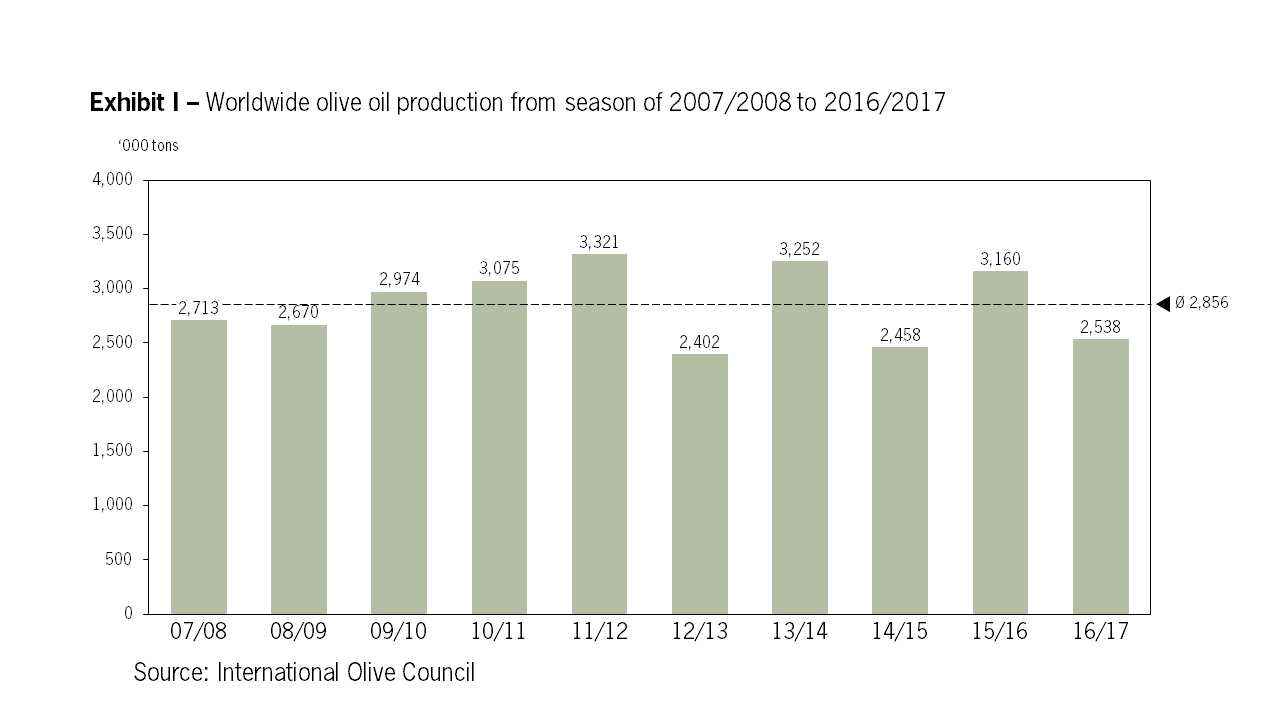

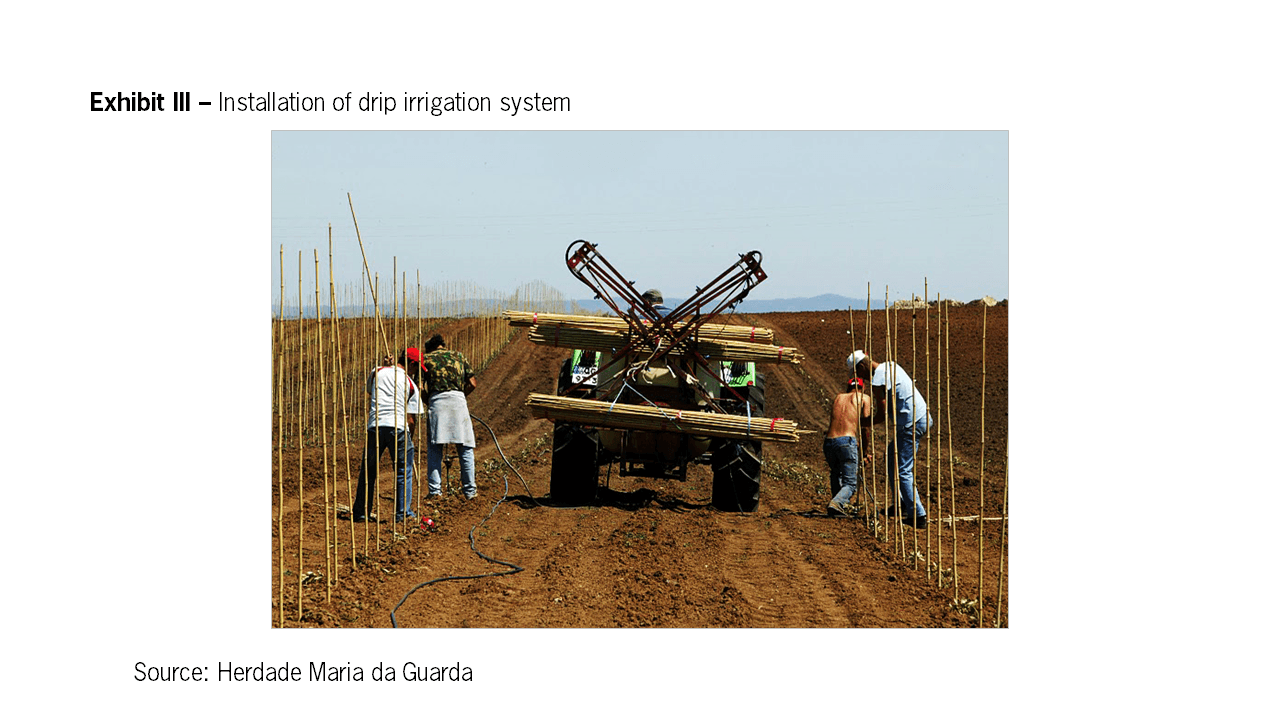
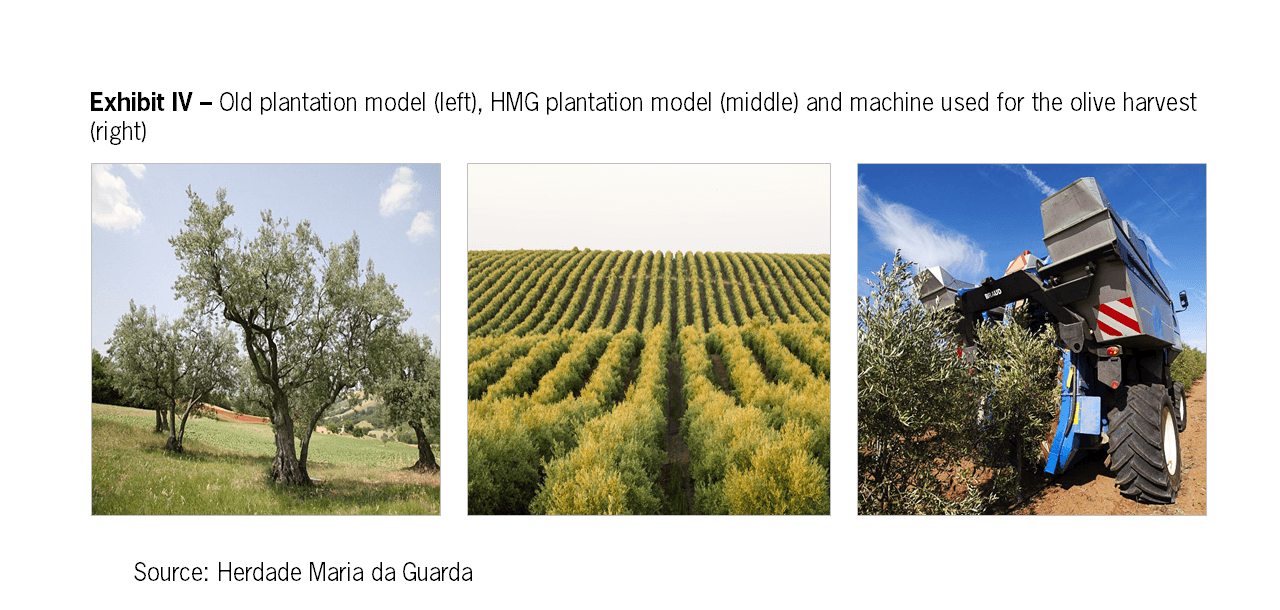
Great post! It seems that HMG has a well-thought out approach to mitigating challenges posed by climate change by reducing rainfall dependence. However, I wonder about HMG’s own carbon footprint. While of course the oxygen produced by their olive trees offsets some pollution, the production and transportation associated with their final product and packaging is undoubtedly a contributor given the scale of their operation. Focusing on their trees is a good way to protect their own profitability in the future — and as you suggest is exemplary — but a thorough commitment to sustainability should, I believe, include a broader look across the supply chain. In a similar vein, operational choices focused on efficiency also appear to have an impact on labor (e.g. 200 workers replaced by a man and machine). Has HMG considered the social impact of their choices in the region? At this point, since medium and long-term solutions are in place focused on their olive trees specifically – including the drip irrigation system and study of tree responses to changes in water and weather – I would encourage HMG to look at other ways they can reduce their footprint and waste across their entire operation.
Great article, Carolina. I didn’t realize that some of these European regions are experiencing such dramatic droughts and water constraints. Similar to the what wine makers are considering, it could be important for HMG to consider different geographies they could potentially buy farms in to produce olive oil. Obviously, this would probably generate a different quality of oil, but it could be a potential short term solution to effectively meeting demand at prices consumers are willing to pay. This is especially true given that HMG has already begun choosing “olive species that are particularly resilient in extreme weather conditions”.
The drip irrigation process definitely seems like a helpful step. One thing I wonder is if it would also be helpful to cover the ground/dirt in which the trees are planted with some sort of material that reduces evaporation much allows water to pass through when it rains. This, along with the drip irrigation pipes, could further help combat the water shortage.
Thanks for sharing, Carolina! Climate change has a direct impact on agriculture around the world and it’s interesting to see how a Portuguese olive oil producer mitigates climate risk by incorporating technology and improving operational efficiency. I love the drip irrigation system. The technology improvement serves as a direct solution to fighting against drought. The rest of the strategies seem to focus on increasing margin from improved operations in order to cover the high cost of water required in the future and ensure sustainability in the long term. However, these strategies are not solving the root cause of climate change and I would argue the impact of these will be limited from a sustainability perspective.
Although I like your suggestion of cleansing and re-using production waste water to water the trees, I would be skeptical about the practicality of this strategy. One risk the company is trying to manage is the rising cost of water. Although production waste water seems like a cheap alternative, but the technology of cleansing the water and recycling it to meet agricultural standard is not only challenging but can cause potential safety concerns. It also incurs huge capital investment and R&D expense. Innovation in sourcing water is sustainable for the company and for the environment as a whole, but it can be very expensive. I would recommend HMG to partner with government and other agriculture companies to form alliance in finding clean and cheap water supply.
As you know, I love olive oil a lot, so I was definitely happy to see your article! Your use of exhibits and figures was extremely beneficial. I really liked the implementation of the drip irrigation. I would be interested to understand how much water an improvement like this ended up saving. I’d imagine it’s a significant amount because it looks like it would significantly decrease the amount of evaporation, and it would also decrease the total amount of water used because of decreasing runoff and over watering with regular irrigation.
The other part I’m interested to see the end or future results is the digital analysis of each tree. I’d agree that ultimately this is what will lead to the most efficient outcomes. That is, as long as we can get accurate data.
Carolina,
It was refreshing to read a post in which a company has successfully implemented changes in its operations that have somewhat mitigated climate change risks. It seems the company has taken the time to really understand its operational challenges and has developed innovative solutions around those challenges (i.e. the drip irrigation system). However, I believe the company can do more to think about its growth strategy and defense mechanisms to climate change. For example, the company can consider establishing a joint venture or acquiring a small international competitor in order to expand its operations without investing significant capital in expanding its own operations. It could also consider strengthening its sales and marketing teams to better serve its current customers and acquire new customers. Additionally, as you mentioned, it should continue to invest in olive tree R&D to develop strains that are resistant to climate change and can produce a quality of product equal to what is being sold today.
Interesting post Carolina,
I think HMG has a good short term plan to deal with potential water shortages. However, one thing they may have not taken into account is government regulation. We are assuming that they will be able to purchase water from the dam (the government) in case of successive droughts, however, government priorities may shift over time. The water in the dam could get earmarked for industrial applications for example if the water shortage gets too acute. This is a problem that was being faced in India last year. To deal with this, HMG could also maybe develop and construct a small dam of their own and harvest their own rain water. This would provide water security to them and also help reduce the risks associated with higher water costs.